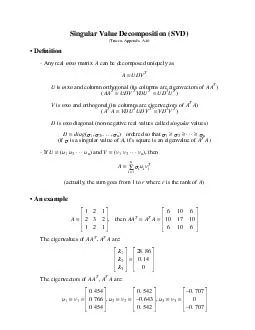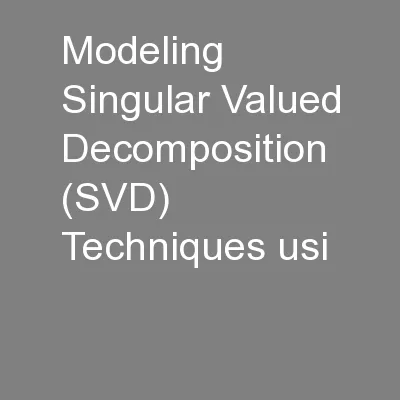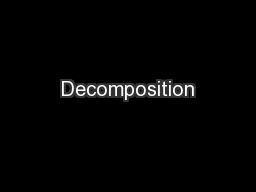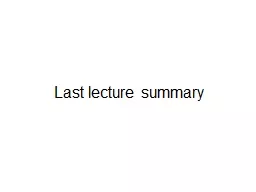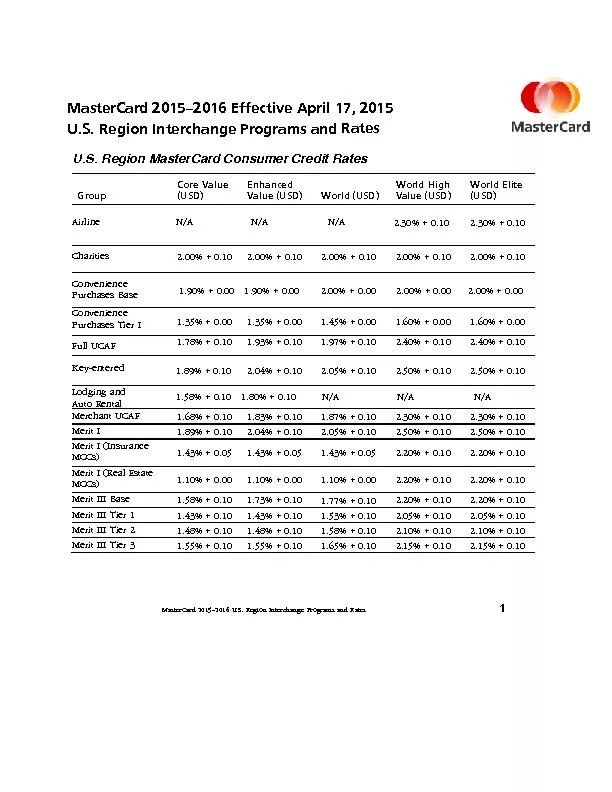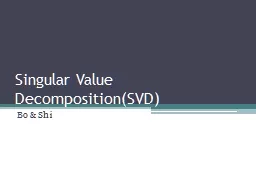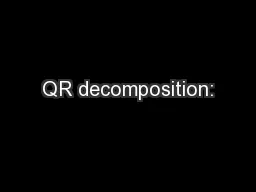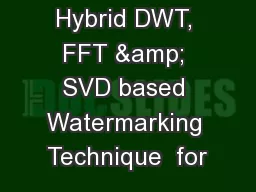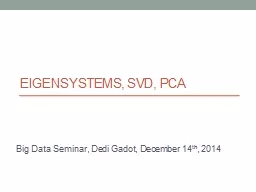PDF-Singular V alue Decomposition SVD T rucco Appendix A
Author : danika-pritchard | Published Date : 2014-12-27
6 De64257nition A ny r eal matrix can be decomposed uniquely as UDV is and column orthogonal its columns are eigen ve ctors of AA AA UDV VDU UD is and orthogonal
Presentation Embed Code
Download Presentation
Download Presentation The PPT/PDF document "Singular V alue Decomposition SVD T rucc..." is the property of its rightful owner. Permission is granted to download and print the materials on this website for personal, non-commercial use only, and to display it on your personal computer provided you do not modify the materials and that you retain all copyright notices contained in the materials. By downloading content from our website, you accept the terms of this agreement.
Singular V alue Decomposition SVD T rucco Appendix A: Transcript
Download Rules Of Document
"Singular V alue Decomposition SVD T rucco Appendix A"The content belongs to its owner. You may download and print it for personal use, without modification, and keep all copyright notices. By downloading, you agree to these terms.
Related Documents

